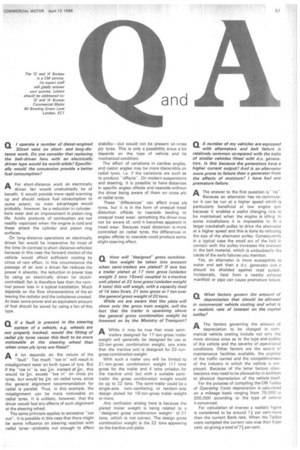Q I operate a number of diesel-engined
Page 59

If you've noticed an error in this article please click here to report it so we can fix it.
30cwt vans on shortand long-distance work. Do you consider that replacing the belt-driven fans with an electrically driven type would be worth while? Specifically would the conversion provide a better fuel consumption?
AFor short-distance work an electrically
driven fan would undoubtedly be of benefit. It would provide more rapid warming up and should reduce fuel consumption to some extent; its main advantages would probably, however, be a reduction in cylinderbore wear and an improvement in piston-ring life. Acidic products of combustion are not readily vaporized when the engine is cold and these attack the cylinder and piston ring surfaces.
On long-distance operations an electrically driven fan would be inoperative for most of the time (in contrast to short-distance vehicles) because in this case the forward motion of the vehicle would afford sufficient cooling by virtue of ram effect. In this circumstance the passage of air over a driven fan reduces the power it absorbs; the reduction in power loss by using an electrically driven (or clutchcontrolled) fan is therefore less than the nominal power loss in a typical installation. Much depends on the flow characteristics of the air leaving the radiator and the turbulence created. At least some power and an equivalent amount of fuel should be saved by using a fan of this type.




































































































